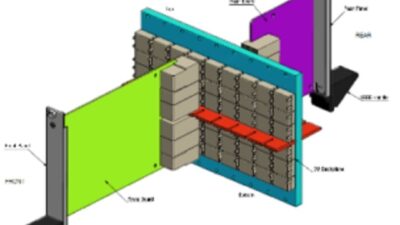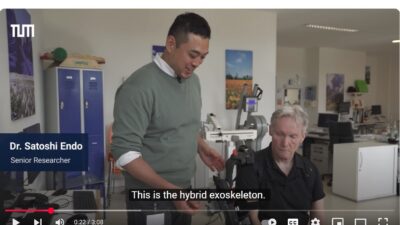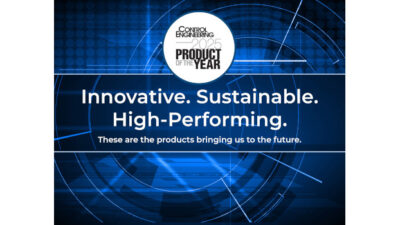Advanced control techniques can be used to extract additional energy from the by-products of chemical reactions known as "off-gases." Off-gases produced by chemical, petrochemical, and metallurgical plants can be reused or sold, depending on the season. Optimizing off-gas usage has become one way to remain competitive, as energy costs have risen over the last five years.
|
Advanced control techniques can be used to extract additional energy from the by-products of chemical reactions known as ”off-gases.” Off-gases produced by chemical, petrochemical, and metallurgical plants can be reused or sold, depending on the season. Optimizing off-gas usage has become one way to remain competitive, as energy costs have risen over the last five years.
The necessary techniques, such as feedforward control, can be programmed into an existing control system as part of a four-step plan:
-
Develop a good understanding of the process and its operation;
-
Develop a good understanding of the existing control system;
-
Define proper control objectives and manipulated variables; and,
-
Apply the right advanced control technique.
And because specialized software packages and instrument purchases are not always necessary, a very high return on investment is possible.
Adaptation to ”real life”
One example of optimization steps applied to off-gas usage is in an ilmenite reduction plant operated by QIT-Fer et Titane (Sorel-Tracy, PQ, Canada). Carbon monoxide (CO) gas is generated as a byproduct of the reduction process in large quantities. It has a high caloric value and is used as a fuel gas across the whole QIT metallurgical complex.
Smelting furnaces produce CO gas while rotary kilns, boilers, coal dryers, UGS [define] plant, and other users consume it. A gas holder between production and consumption stores the CO to absorb high-frequency disturbances and keep gas pressure constant in the CO piping network. The gas holder has a movable membrane roof and a residence time of less than one minute.
| This graphic shows the initial plant arrangement and the original PID control strategy for maintaining CO level in the gas holder. |
Two flare stacks with control valves are used to burn excess CO production when the gas holder level reaches its upper limit. Kilns burn both CO from the gas holder and natural gas at a mixing ratio varying between 0 and 100%. The natural gas allows the operation of the kiln to be maintained when CO production and levels in the gas holder are low.
The old control strategy was built with the exclusive objective of maintaining a tight gas holder level, using two conventional PID controllers in a cascade arrangement. A master controller regulated the gas holder level while a slave controller regulated the mixing ratio of the kiln fuel. Output of the level controller was split into two parts-0% to X% was used to modulate the mixing ratio setpoint while X% to 100% handled modulation of the flare valves.
| Typical CO gas production and consumption over any 24-hr period caused wide perturbations to the gas holder level.. |
Originally, there was no dynamic coordination between the flare valves and the mixing ratio. As a result, there were times that perturbations to the CO level caused the control system to burn off excess CO gas and feed natural gas to the kilns at the same time, This occurred in spite of availability of CO gas. Such unstable periods typically lasted for just a few minutes, but were costly to QIT, especially as the price of natural gas increased
Enter the new strategy
Solving the problem required a new strategy using feedforward control. It was applied to the QIT-Fer et Titane plant using the four-step plan as follows:
-
Understand the process and its operation – CO gas production and consumption vary considerably over short intervals (see accompanying graph). Unfortunately, this cannot be changed due to the overall plant production schedule and constraints. However, CO production and consumption can be measured and analyzed to identify the process delays caused by the distribution piping. The longer the delay, the harder it is for the control system to compensate for disturbances.
A detailed analysis of CO gas consumption also revealed that the major and most frequent disturbances are caused by the UGS plant. Delay between this user and the holder tank is 20 seconds. The delay between the CO producers and the holder tank is only half that. -
Understand the existing control system – When a disturbance occurred due to variations in production or consumption, the control system took action too aggressively and too late because of delays. The holder tank level controller was tuned aggressively to react quickly to disturbance, causing the manipulated variables to swing. This in turn caused simultaneous flaring of the CO gas and increase of natural gas flow to the kilns.
-
Define proper control objectives and manipulated variables – The new control strategy has the same manipulated variables but different objectives. They include maintaining the gas holder level in a certain range and coordinating flares and the mixing ratio to prevent flaring when natural gas is being fed to the kiln (and vice versa).
In the old control strategy, tight level control was the only objective. In the new control strategy, ‘smoothness’ is included in the controller’s objectives to reduce the manipulated variable swings. An economic objective was also introduced. This important objective is too often forgotten or not well defined and applied in industrial applications.
The new control system also takes advantage of certain measurements of CO production and consumption that were being collected for other purposes but not being used by the old control strategy. No additional instrumentation was required. This demonstrates the importance of carefully evaluating the controller’s information requirements to avoid unneeded new instrument purchases. -
Apply the right advanced control technique – Feedforward control was chosen as the most suitable advanced control technique for this application because the disturbances are measurable, well known, and easily modeled from archived process data. Gains and time constants of the disturbance model were computed from process data stored by the existing historian.
Achieving objectives
The new objectives were achieved by introducing three new elements to the control strategy. These included the addition of feedforward controllers based on a mass balance calculation (consumption vs. production), dynamic compensation for transport delays, and the coupling of flare valves and the gas ratio controller to prevent overlap.
| Addition of advanced control strategy has reduced periods of simultaneous CO gas flaring. Natural gas consumption is down by 76%, representing sizeable savings in natural gas costs. |
Six feedforward controllers have been implemented to handle two disturbance variables (CO production and UGS plant consumption), three manipulated variables (two valves and the mixing ratio), and one controlled variable (the gas holder level). Other users are not included in the feedforward loop since their CO gas consumption is fairly stable.
Feedforward controllers provide lead/lag compensation for transport delays based on process and disturbance models. The feedback loop controlling gas holder level has been retained in the new control strategy to keep gas level at its setpoint and to correct for model errors in the feedforward controllers. However, the level controller’s PID parameters are tuned less aggressively since the feedforward controllers now provide the major correction when a disturbance occurs.
Case for simulation
The new control strategy was initially simulated with Simulink, a Matlab toolbox from The Mathworks (Natick, MA) to minimize costs and to expedite the schedule. The simulator was built with simple first-order-plus-delay transfer functions and was tuned with archived data.
The simulation helped with the design of a better and faster customized solution, and also facilitated the commissioning. The new control strategy was pre-tuned with real CO gas consumption and production data imported to the simulator. Special cases, such as plant shut down, were also simulated to make sure that the advanced control strategy would be safe.
The strategy was then implemented on QIT’s control architecture, a Modicon PLC from Schneider Electric (North Andover, MA) and human-machine interface by Wonderware (Irvine, CA) without any additional hardware or software expenditures. The program was modified using ladder logic language.
Since the commissioning of this advanced control strategy, the periods of simultaneous CO gas flaring and natural gas usage have been reduced by 76%. This reduction represent natural gas cost savings of up to C$ 1million (Canadian dollars) per year.
Comments? E-mail Vance VanDoren at [email protected] .
| Author Informatio n |
| Bernard Pelletier is an advanced control engineer for Hatch Associates (Mississauga, ON, Canada). Vance VanDoren is consulting editor for Control Engineering. |
Online Information
For more about Hatch and more than 1,000 other system integrators and automation-engineering firms, log on to the 2003 Automation Integrator Guide at



